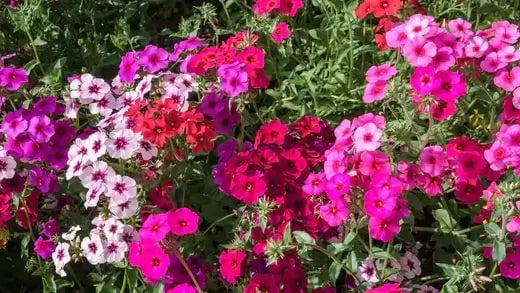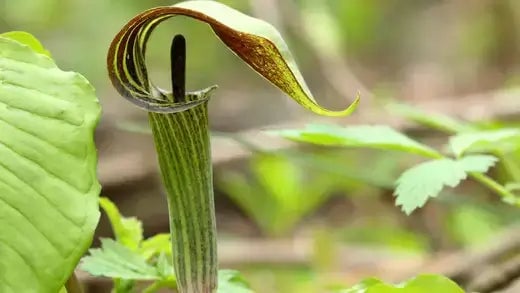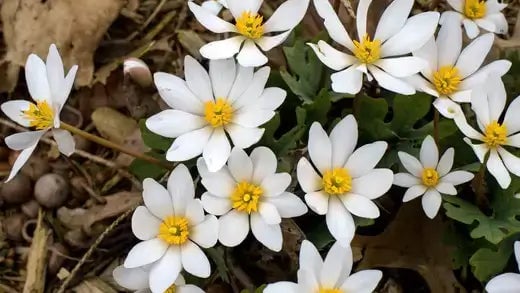Annual Phlox: A Comprehensive Guide to its Medicinal Uses and Benefits
Annual Phlox, scientifically known as Phlox drummondii, is a vibrant and colorful flowering plant that belongs to the Polemoniaceae family.
Native to North America, this annual herb is renowned for its stunning display of blossoms that range from shades of pink, purple, red, and white. While primarily cherished for its ornamental qualities, Annual Phlox also possesses a range of medicinal uses.
This comprehensive guide will delve into Annual Phlox's botanical characteristics, cultivation, traditional services, and modern therapeutic applications.
Botanical Characteristics and Cultivation
Annual Phlox is characterized by its compact growth habit and clusters of small, fragrant flowers that form atop sturdy stems. The plant typically reaches about 6 to 18 inches (15 to 45 cm) and blooms during the spring and summer months, making it a popular choice for garden enthusiasts seeking to add a splash of color to their landscapes.
Cultivating Annual Phlox is relatively straightforward, making it an excellent option for novice and experienced gardeners. The plant prefers well-draining soil with a slightly acidic to neutral pH with adequate air circulation to prevent common fungal diseases. Annual Phlox is often sown directly from seeds, and its relatively short growth cycle allows for quick and rewarding results.
Traditional Uses Throughout history, various indigenous cultures recognized the medicinal properties of Annual Phlox and utilized different parts of the plant for therapeutic purposes.
Some traditional uses include: Respiratory Support: Indigenous tribes would prepare infusions from Annual Phlox leaves and flowers to ease respiratory discomforts such as coughs, congestion, and sore throats.
Anti-Inflammatory: Poultices made from crushed Annual Phlox leaves were applied topically to reduce inflammation, alleviate insect bites, and soothe minor skin irritations.
Digestive Aid: Infusions derived from the plant were consumed to help alleviate indigestion, bloating, and gastrointestinal discomfort.
Wound Healing: The astringent properties of Annual Phlox were harnessed by Native American communities to aid in wound healing and promote faster recovery. Modern Medicinal Applications In recent years, interest in natural remedies and traditional herbal medicine has been resurgent. As a result, Annual Phlox has caught the attention of researchers and herbalists for its potential modern medicinal applications.
While more rigorous scientific research is needed to validate these claims, some of the purported benefits include: Antimicrobial Properties: Certain compounds in Annual Phlox exhibit antimicrobial activity, which could make it a candidate for developing natural alternatives to conventional antimicrobial agents.
Anti-Inflammatory Effects: The plant's historical use as an anti-inflammatory agent suggests that it might have applications in managing inflammatory conditions.
Respiratory Health: Compounds in Annual Phlox could support respiratory health and be investigated for their role in managing respiratory ailments.
Skin Health: With its traditional use in wound healing and skin irritation relief, the plant could contribute to the development of natural skincare products.
Precautions and Considerations
While Annual Phlox holds promise in various aspects, it's essential to approach its potential medicinal uses with caution. As with any herbal remedy, consult a qualified healthcare professional before using Annual Phlox for therapeutic purposes. Additionally, allergies or sensitivities to the plant may exist, so a patch test is advisable before applying it to the skin.
- 1. Allergies and Sensitivities: Individuals with known allergies to Polemoniaceae family plants, including Phlox species, should exercise caution when using or handling Annual Phlox. Before using some part of the plant for medicinal purposes, it's recommended to perform a patch test on a small area of skin to check for any adverse reactions.
- 2. Dosage and Administration: When using Annual Phlox for medicinal purposes, adhering to recommended dosages and administration methods is crucial. Traditional use and modern research provide general guidelines, but consulting a qualified healthcare professional or herbalist is advisable to determine the appropriate dosage for your condition. Avoid excessive consumption, as high doses of any substance, even natural ones, can lead to adverse effects.
- 3. Interaction with Medications: If you are currently taking prescription medications, it's essential to consult a healthcare provider before incorporating Annual Phlox into your health regimen. There is a potential for interactions between herbal remedies and pharmaceutical drugs. An expert can guide whether there might be any adverse interactions between the plant's compounds and your medications.
- 4. Pregnancy and Breastfeeding: Limited research exists on the plant's safety during these periods, so it's advisable to err on the side of caution and avoid its use unless under the guidance of a healthcare professional.
- 5. Quality and Source: Obtain the plant from a reputable source when using Annual Phlox for medicinal purposes. Quality matters, as the efficacy and safety of herbal remedies can vary based on factors such as cultivation methods, harvesting practices, and processing. If possible, choose products that have been tested for purity and potency.
- 6. Adverse Reactions: In the event of any unexpected or adverse reactions after using Annual Phlox, discontinue use promptly and seek medical attention if symptoms are severe or persistent. Please keep track of any changes you notice, including skin reactions, digestive discomfort, or any other signs.
- 7. Consult a Professional: Before embarking on any new herbal regimen, especially for addressing specific health concerns, it's wise to consult a qualified healthcare professional or experienced herbalist.
- 8. Avoid Ingesting Wild Plants: While Annual Phlox can be cultivated in gardens, it's essential to refrain from ingesting wild plants or parts of the plant unless you are sure about their identification and safety. Mistakenly consuming the wrong plant can lead to serious
- 9. Children and Pets: Keep Annual Phlox and any products derived from it out of the reach of children and pets. Children and animals may be more susceptible to adverse reactions, and accidental ingestion should be prevented.
- 10. Long-Term Use and Monitoring: If considering long-term use of Annual Phlox for its potential benefits, it's advisable to reassess its effects on your health and well-being periodically. Regular monitoring can help identify any changes or developments that may require adjustments to your regimen.
With its captivating appearance and historical significance, Annual Phlox offers more than just aesthetic appeal. Its herbal medicine showcases its versatility as a medicinal plant. As research continues to unveil the compounds and properties of Annual Phlox, we might unlock new avenues for natural remedies and contribute to our understanding of its full therapeutic potential. However, it's crucial to approach its uses judiciously, respecting its historical importance and the need for rigorous scientific validation in modern medicine. Whether adorning gardens or potentially offering remedies, Annual Phlox stands as a testament to the intricate relationship between humans and the natural world.
How to Safely Explore Homemade Remedies and the Use of Annual Phlox
Disclaimer: This information serves general educational purposes only and cannot replace professional medical advice. Before trying new herbs or homemade remedies, consult your healthcare provider.
The annual phlox variety Phlox drummondii has been traditionally cultivated because its delicate, colorful flowers light up garden spaces during summer. Mainstream herbal medicine does not focus on annual phlox research or celebration despite its common recognition as medicinal, such as chamomile and peppermint. Various gardeners and plant lovers enjoy examining obscure plant species to determine their possible health benefits. Exploring do-it-yourself remedies requires thorough research while ensuring safety throughout and seeking professional advice before each step.
Before using it for homemade remedies, always begin with comprehensive research about the plant. Research the plant's possible toxic effects and chemical makeup while studying its historical and cultural applications. Annual phlox does not have a reputation for its medicinal properties, yet some people apply the plant to soothe irritated skin mildly. If you wish to test any such application, In that case, it is essential to perform a patch test first: Apply a small quantity of the prepared solution onto a hidden section of skin, such as your inner elbow, and observe for 24 hours to check for any adverse skin reactions.
When harvesting annual phlox for home experiments, select only healthy flowers and leaves that show no signs of pests and have not been exposed to chemical pesticides or herbicides. Use cool running water to rinse them carefully to remove any surface dirt or insects. Some homemade remedies require drying plant material to produce powder or tea-like infusions; others use fresh plants to formulate mild salves or lotions. Making an essential infused oil involves:
Put washed phlox flowers patted dry in a sterile glass container.
Pour olive oil over them until they are fully submerged.
Keep the jar sealed and place it in a cool, dry environment for two weeks, shaking it gently every other day.
Once the infusion process finishes, strain the plant material from the oil using fine mesh or cheesecloth.
Apply the infused oil to the skin cautiously and conduct a sensitivity test before each use. The scientific understanding of annual phlox properties remains limited, so evidence regarding its effectiveness and safety is primarily anecdotal.
Professional medical care must remain your primary health resource even when you use homemade remedies. For specific health issues, consult an experienced herbalist, a naturopathic doctor, or a conventional healthcare provider who will provide advice on both established and experimental treatments. Exploring herbal experimentation becomes safer through a balance of curiosity and vigilance. You can safely investigate the benefits of annual phlox and other obscure plants in your home setting through detailed research and patch testing combined with professional consultations.




